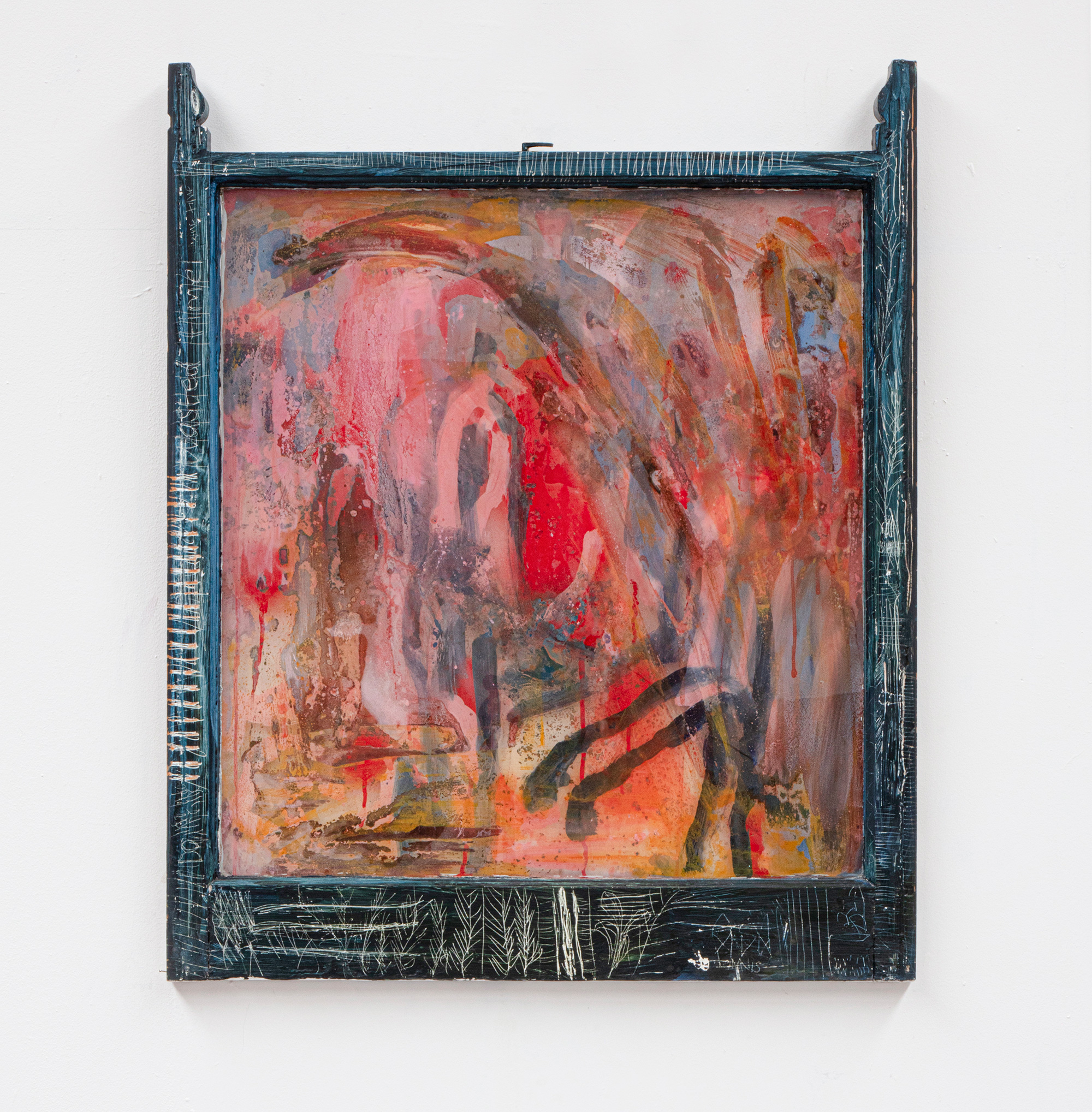After Before – No. 20 Arts, London
A second excursion to No. 20 Arts in Islington yields up After Before, a group show bringing together eight visually impactful artists.
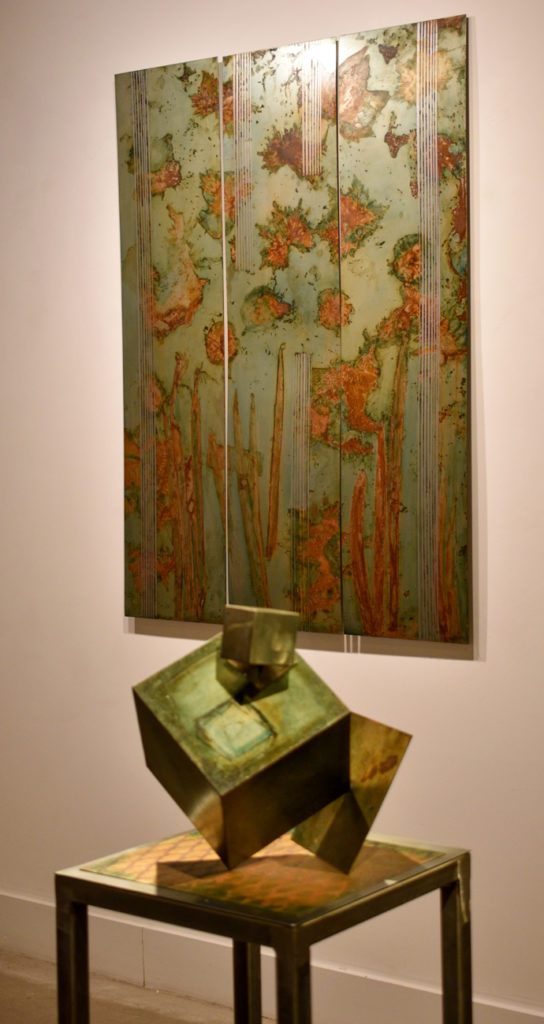
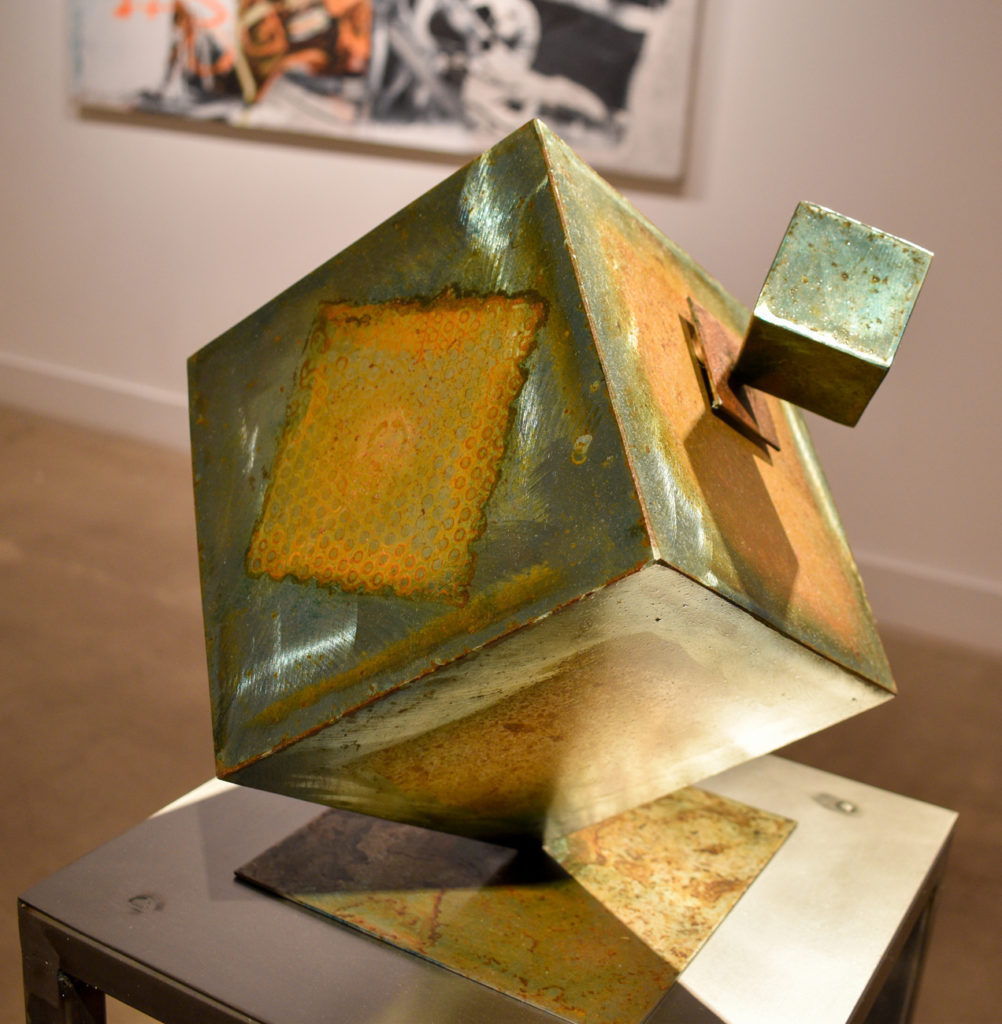
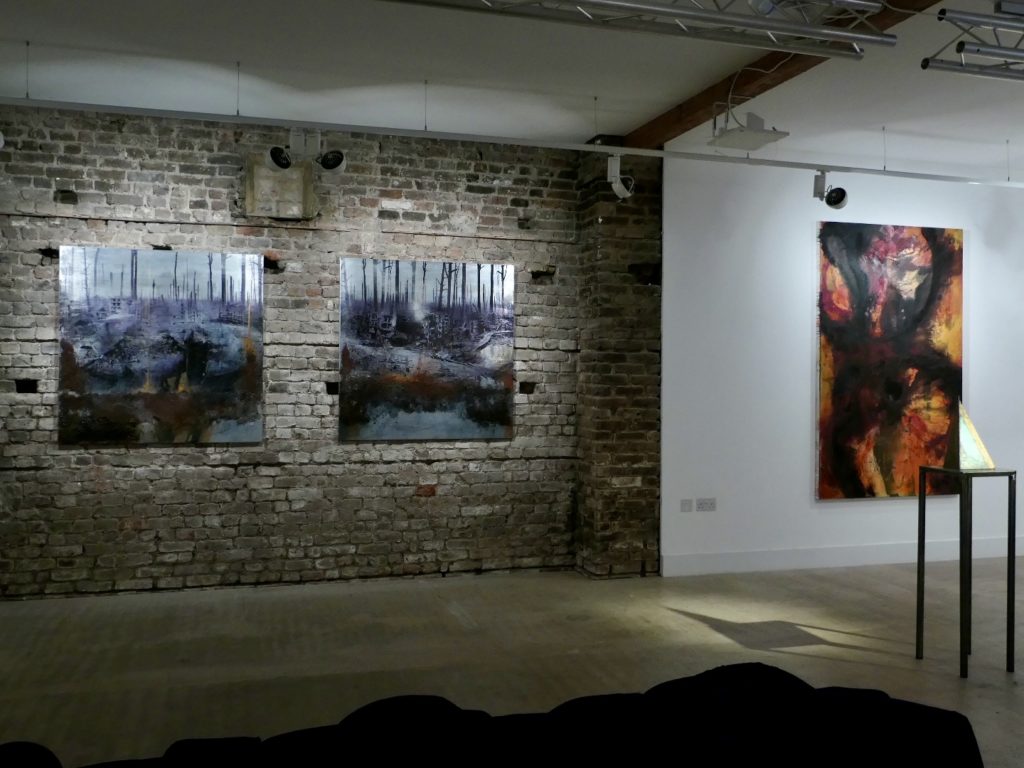

After Before
A few months after my first visit to No. 20 Arts just off Islington’s Upper Street, I am back to see their latest offering. You may recall that on my last visit I saw work by Jim Threapleton from his series Lorem Ipsum. This time around No. 20 Arts has a group show on view, entitled After Before. Eight artists have contributed work to the exhibition. The gallery tells us that they “embrace risks, uncertainties and organic transformations of materials and forms in different ways to create distinct captivating works of art that investigate themes of change, belonging, violence and hope.” This is a bold statement full of action and interest, but at the same time one that is perhaps hard to pin down. How do these concerns manifest themselves? What are the similarities and differences between the artists’ approaches? Only one way to find out, and that’s to go and see it.
If you did read that previous review, you may also recall me saying that this is a great exhibition space. No. 20 Arts is a former frame factory, with a great industrial aesthetic. Some artworks are displayed against white walls, while others compete with exposed and weathered brick. Perhaps more delicate artworks would be lost against this backdrop, but this is not the case for the eight artists featured in After Before. There are a mixture of paintings, ceramics, and works in metal. The paintings are for the most part strong, with dominant colours and intuitive, abstracted designs. The sculptures and flat artworks in metal have powerful textures and sharp angles. Ceramics by Simon Kidd are perhaps the outlier, their delicate and simple designs belying their complex influences from Irish history.
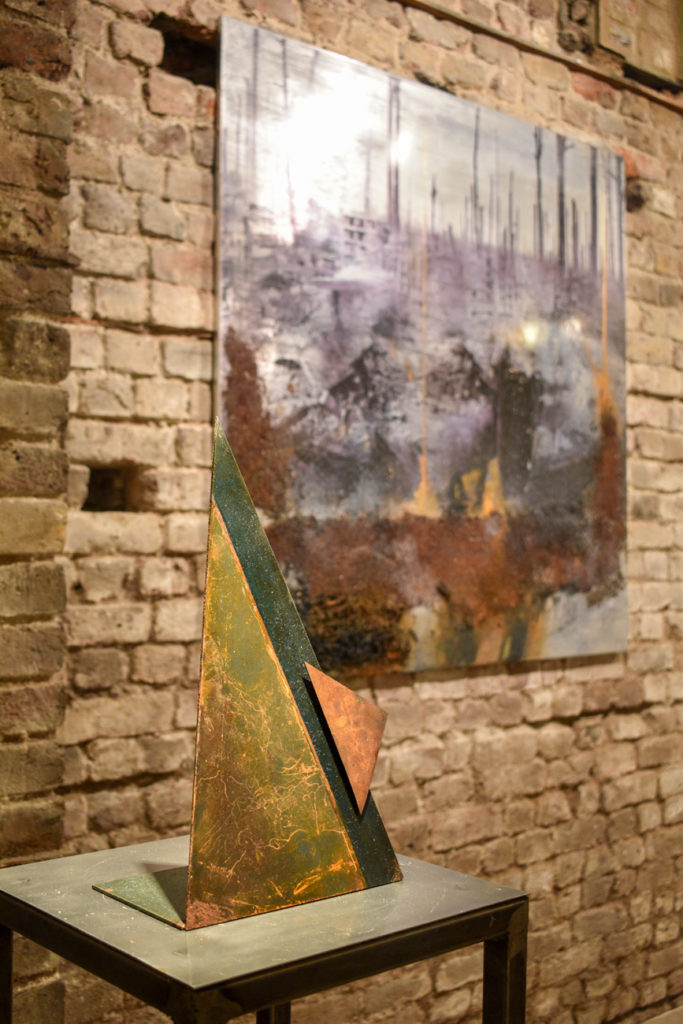

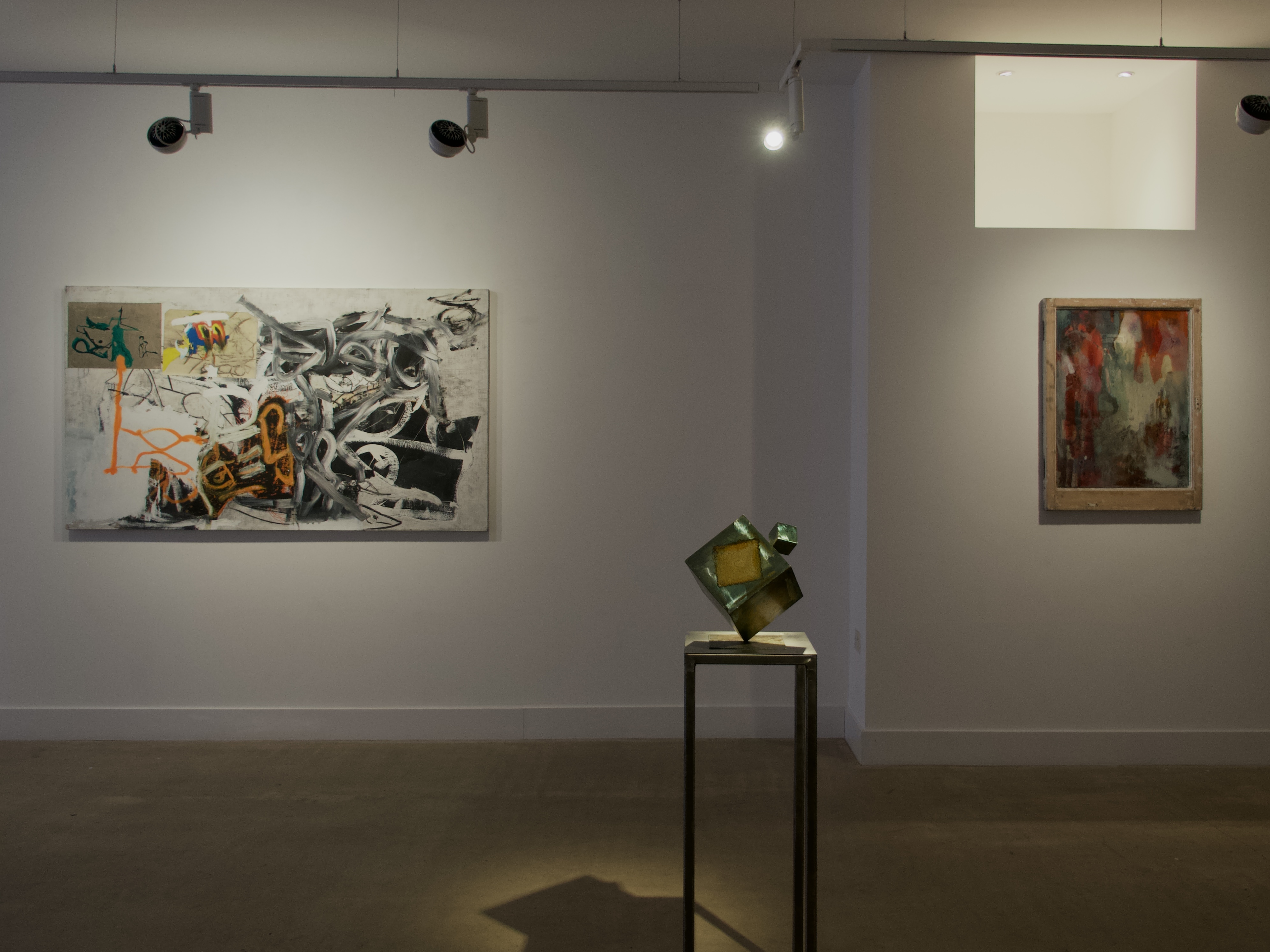

A Few Highlights
A group exhibition is always about putting the pieces in dialogue. As you can see in the installation views above, this selection of artists is quite finely balanced. A cross-section of styles, media, influences and backgrounds makes for interesting juxtapositions and connections. There will always be some that you respond to more than others, however, so here in no particular order are a couple of my chosen highlights.
Firstly, I really responded to the work of Jo Dennis. Trained at the Royal College of Art, Dennis here exhibits works from her Solid Liquid series. By combining different paint types, she is able to play with chemical processes to produce interesting effects akin to reflections. Framing her works in old window frames alludes to processes of weathering and decay. I found these works visually striking, and spent a long time getting up close to the subtle but interesting textures on their surface.
Also a Royal College of Art graduate, Judith Burrows contributes several metal sculptures to the exhibition as well as a triptych of metal panels. Recognisably organic shapes are scarred into the metal of Alchemy IV-VI, Spring Equinox, while her three-dimensional sculptures showcase both the strength and vulnerability of steel as a material. Along with the ceramics, they provide visual interest and break up the exhibition installation.
To go back to the gallery’s statement, yes these artists probably do embrace uncertainties and the transformation of materials. They cover as broad a range of themes as promised. And the resulting works of art are captivating. In an ideal world I like something a little more thematic to sink my teeth into when exploring an exhibition. But No. 20 Arts remains one to watch, with interesting content in a unique setting.
Salterton Arts Review’s rating: 3.5/5
After Before on until 25 March 2023
Trending
If you see this after your page is loaded completely, leafletJS files are missing.

